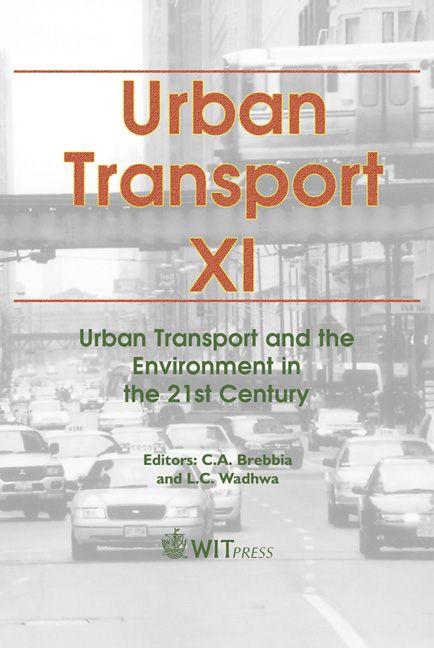Transport Accessibility And Urban Development: A Case Study Of The City Of Rio De Janeiro, Brazil
Price
Free (open access)
Transaction
Volume
77
Pages
9
Published
2005
Size
987 kb
Paper DOI
10.2495/UT050381
Copyright
WIT Press
Author(s)
D. S. C. P. Lemos, M. P. S. Santos & L. S. Silva
Abstract
The understanding of the relationship between transport and urban development has been an important research objective for many years. In this paper, a case study carried out in the city of Rio de Janeiro, Brazil, is presented. Transport accessibility is represented through the use of a set of transport infrastructure indicators related not only to the urban road and traffic systems, but also to urban public transport supply characteristics. Urban development is expressed in the form of human development indicators, which are directly linked with the social and economic aspects of Rio de Janeiro city. The analysis of the relationship between urban development and transport accessibility is carried out considering the municipal area of Rio de Janeiro, which is divided into 32 administrative regions. The data basis used in the analysis consisted of information regarding these 32 administrative regions that was assumed to be the spatial analysis unit. The results of the statistical analysis have shown that, for the city of Rio de Janeiro, there is no clear evidence to assume the relationship between the indicators of transport accessibility and indicators of urban development. On the other hand, the results of the analysis have also shown that, under certain peculiar characteristics of both socio-economic and transport infrastructure conditions, the relationship might be considered as a valid one. In this last case, only a partial sample of administrative regions has been used. Keywords: accessibility, urban development, Rio de Janeiro, Brazil. 1 Introduction The lack of equilibrium in urban development for large metropolitan regions in developing countries is well documented. In this context, particularly in the case
Keywords
accessibility, urban development, Rio de Janeiro, Brazil.





